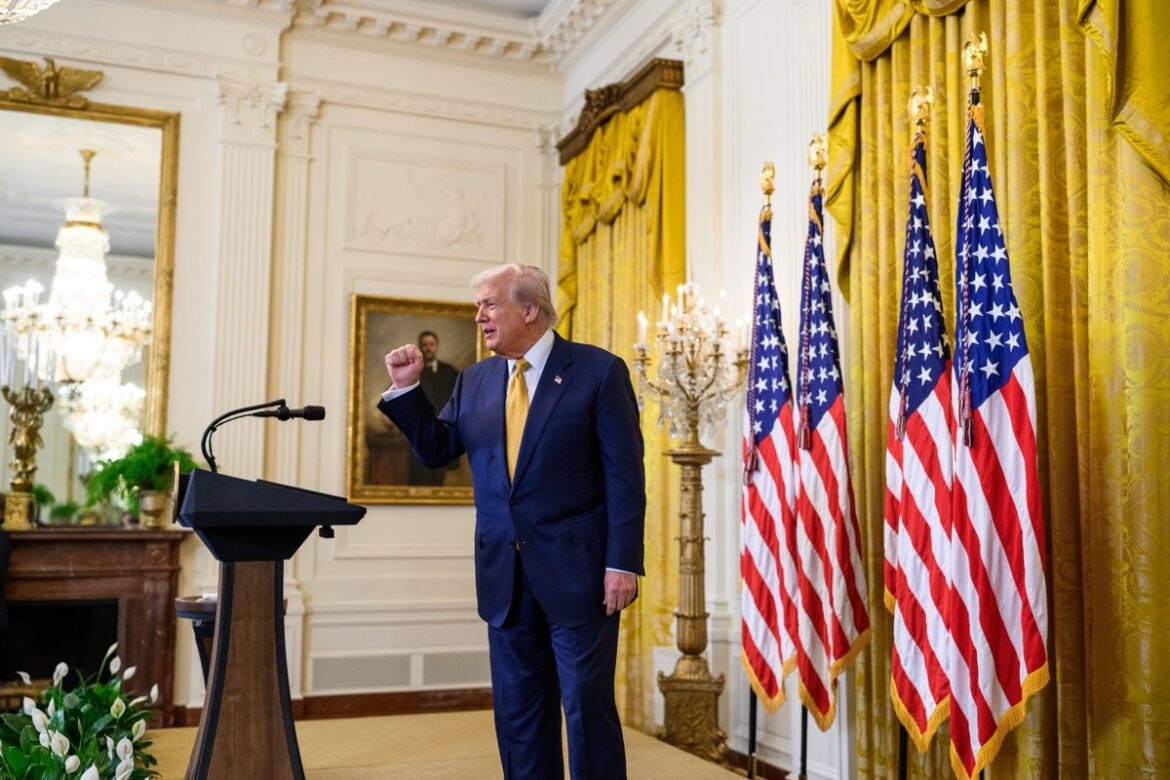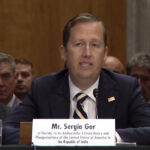To read too much into what is happening in Washington, D.C., vis-à-vis what President Donald Trump is saying on Russia sanctions would be as wrong as not seeing the rather subtle signals that are being sent in the direction of New Delhi.
In a bilateral relationship where words have come to matter more than any tangible shifts in policies, a lot of weight is being attached to President Trump’s latest directive to the capitals of Europe: that they should first come up with their punitive measures package against Russia, stop buying its oil, and slap tariffs on China for importing oil from Moscow, before the United States comes up with its list of sanctions against Moscow.
The fact that President Trump, in just a span of three days, had not bracketed India with China on Europe’s sanctions came in for special attention. Earlier, the man sitting in the Oval Office demanded that European nations (meaning those in NATO) should slap tariffs ranging from 50 percent to 100 percent on both New Delhi and Beijing.
It has taken the Trump administration several months to realize that both China and Europe are complicit in this Russian oil purchase; and, taking this one step forward, the United States and Ukraine as well have contributed to Vladimir Putin’s dollar earnings. For all his lectures on the need to step up sanctions on countries that do oil business with Moscow, Ukraine’s President Volodymyr Zelensky conveniently forgets that, according to reports, in July 2025, nearly 16 percent of Ukraine’s diesel imports came from India, which had been refined from Russian crude bought at discounted prices.
In more ways than one, the first breather, if one might use the word, in bilateral relations has come by way of Sergio Gor, the American Ambassador-designate to India and the envoy to Central Asia. His remarks to the Senate Foreign Relations Committee and the introductory remarks of Secretary of State Marco Rubio have actually set the stage for the future of India–United States relations.
Secretary Rubio came to the Dirksen Building not to score a few brownie points with President Trump; he came to underscore the importance and criticality of bilateral relations that had definitely been ruptured, in no small measure due to the rants of administration officials, under instructions or otherwise.
The soon-to-be-confirmed Ambassador and Secretary Rubio may not have set the Potomac on fire with their commentaries, but they have certainly arrested, at least for the time being, further slide in bilateral relations. And for those who were bent out of shape that President Trump had not, until this August, nominated anyone to such an important post as India, here is something to chew on: President Joe Biden did not name his envoy until July 2021.
And when the impression is that the present Senate will be clearing Gor’s name in the next several days, it took President Biden 26 months to get Ambassador Eric Garcetti to New Delhi, and that too with the help of seven Republicans making up for the bipartisanship. President Bill Clinton also kept the India post vacant for more than a year after Ambassador Thomas Pickering moved on from New Delhi to Moscow.
The time has also come to look past Envoy-designate Gor’s “qualifications” in a prime spot in South Asia. At 38 years of age, he is certainly not the Chester Bowles, John Kenneth Galbraith, or Daniel Patrick Moynihan that India knew between 1951 and 1975. But times are different, and Presidents in Washington feel the need to be comfortable with their own people in capitals, not paying much attention to country expertise or whether they had taken a course, or audited one, in the country of posting. As Secretary Rubio put it in the Senate the other day: when Gor speaks, he does so not only for the State Department but also for the President, emphasizing the depth of personal relationship between the incoming envoy and President Trump. This indeed is a definite advantage for India.
For the person soon to set foot in Chanakyapuri, New Delhi, this is a vital period in bilateral relations that needs a holistic perspective instead of one seen through the prism of Russian oil. Seen as a sharp person—handling personnel in the White House is not an easy job by any stretch of the imagination—Gor will be in a position to learn first-hand about India and the distance the two countries have traveled in the last three decades or so.
He will also be in the neighborhood to see for himself a state sponsor of terror going about its business even as it puts on an innocent face and tries to impress Washington with its “recently found” oil and minerals, not to forget cryptos. From a South Asia perspective, the new envoy will also be seeing the difficult scenarios in countries like Bangladesh and Nepal, both of which are vital to the strategic interests of the United States.
The critical thing for India is not to be constantly blindsided or falling back into the rear-view mirror. Learning from the past is one thing, but continually harping on it would seem to serve little purpose. India would have to rank-order its strategic priorities, which in the present context will have economics, tariffs and sanctions, at the very top. Adhering strongly to a point of view does not mean lecturing or hectoring; at the same time, listening is all too important in diplomacy. New Delhi and Washington have traveled a long distance that should not be squandered away on rants and cheap shots.
Disclaimer: The opinions and views expressed in this article/column are those of the author(s) and do not necessarily reflect the views or positions of South Asian Herald.






